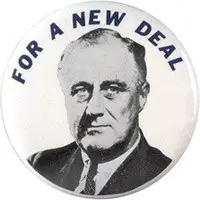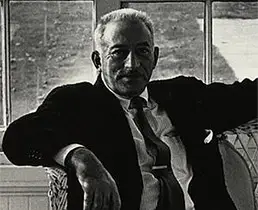The United States Post Office murals were made from 1934 to 1943. The endearing images showcase the American scene and turned post offices into art galleries. The images were created as a representation of hope during the Great Depression. This was a time of despair both economically and financially, in which President Roosevelt led the Federal government to implement the ‘New Deal Policy’ which targeted unemployed people. Art was an essential component of the project. The post office murals represented things that an ordinary American citizen would understand and were installed in about 140 post offices in all parts of the country. One may even be in a post office near you.

The History of United States Post Office Murals
The Great Depression
The Period of the Great Depression lasted from 1929 to 1941, during which the average income of the American family dropped from $2,300 to about $1,500. Most Americans became more concerned with survival instead of progress. What had been known as the country of opportunity slowly turned into a nation of misfortune and people even began questioning the American principle of capitalism. The number of homeless and unemployed people was increasing fast, and the economy was dwindling. President Roosevelt was determined to raise the spirits of Americans. To improve the economy, he thought the ‘New Deal’ program might be helpful.
The New Deal Program

This program included a series of worker relief programs and sought to benefit those who had been affected most by the Great Depression. Organizations were created to help boost the economy and the spirit of Americans. They included CC, FSA, WPA, AAA, NRA, and TVA. The president realized that the problem was not only financial but also an issue of the spirit. He believed that using arts and visual symbols may give hope to despairing Americans.
Pieces of art were commissioned from talented but unemployed Americans. The Federal government employed almost 10,000 artists to produce 100,000 easel paintings, 4,000 murals, 13,000 prints, and 18,000 sculptures. The New Deal truly helped to bridge the gap between the typical American and art.
When the Public Works of Art Project ended in 1934, it was determined that the project was more likely to succeed if the Section of Painting and Sculpture was founded. In 1938, the section was renamed to the Section of Fine Arts. The Section of Painting and Sculptures produced murals to be used in post office buildings in over 1,300 cities across the United States.
The project targeted post offices because they were available to many American citizens at the time. It was the government building that members of the public frequented the most. According to the section, the murals were to be placed on the walls of all new post offices. Every newly-constructed post office was required to set one percent of its income aside for the creation of murals.
The Treasury Relief Art Project (TRAP) (1935-1938) provided artistic decorations for Federal buildings and other buildings. They also produced murals for post offices. The Works Progress Administration provided the funds that were needed to start TRAP. This project provided a small number of post office murals.
Post Office Mural Controversies
Controversies sometimes arose when States hired artists from other States. There were also issues wherein locals felt that the murals did not represent their beliefs, values, and work ethic. In the Southern States, for example, many small towns did not like the fact that their areas were represented by artists who did not know much about them. When it came to Post Offices in Arkansas, locals felt that artists focused too much on what was wrong. They felt that there was a lot more to them than poverty and hardship. According to Arkansas residents, there was a need to leave their children and grandchildren a better legacy. The wanted the murals on their post offices to communicate a message of hope and a better future than they had. Other complaints stemmed from the fact that the local governments would sometimes use murals that had not been approved by the local community.
Artists Involved in The Creation of Post Office Murals
Many artists were involved in the creation of these murals. They included:

Adolph Gottlieb
- Horace Day
- Arthur Covey
- Philip Evergood
- Jean Charlot
- Minna Citron
- Daniel Celentano
- Margaret Dobson
- Lee Gatch
- Robert Franklin Gates
- Sante Grazani
- Adolph Gottlieb
Are the Post Office Murals Still Significant?
The murals at post offices became a symbol of hope during the Depression Era. They reminded people of the real America spirit and reflected American history and way of life. They created job opportunities for local artists who had been unemployed and were a form of public luxury. The fact that there were post offices in all parts of the United States meant that the message of hope could reach every citizen.
Many of the murals featured genre themes. They showed Americans at work and their places of entertainment. It was strongly influenced by the social changes and realities at the moment. There were plenty of murals to show industrial America. However, the artists were careful not to showcase tragic or depressing portrayals. This is because the aim was to promote hope and not despair.
The murals are more than just decorations on the walls of post offices. They are a representation of what America has faced and conquered.
References
- Marling, Karal Ann (1982). Wall-to-Wall America: A Cultural History of Post Office Murals in the Great Depression. Minneapolis: University of Minnesota Press. ISBN 9780816636730.
- Beckham, Sue Bridwell (1989). Depression Post Office Murals and Southern Culture: A Gentle Reconstruction. Baton Rouge; London; Louisiana State University Press. ISBN 0807114472.
- Smith, Sandra Taylor; Christ, Mark E. Arkansas Post Offices and the Treasury Department’s Section Art Program, 1935-1942 (PDF). Little Rock: Arkansas Historic Preservation Program.
- McKinzie, Richard D (1973). The New Deal for Artists. Princeton University Press.
- Rosenzweig, Roy; Melosh, Barbara (1990). Government and the Arts: Voices from the New Deal Era. The Journal of American History. Vol. 77, No. 2, pp. 596-608
